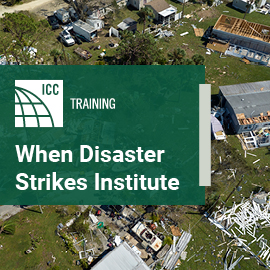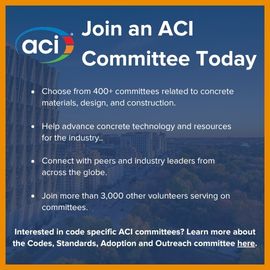
The Importance of Building and Code Enforcement Collaboration
Understanding how codes relate to each other, and how industry professionals can work together to improve standards and regulations is crucial for the continuous improvement of building and property maintenance codes.
It is crucial that code enforcement officers maintain a collaborative mindset in order for their community to benefit as a whole.
The duties of a code enforcement officer vary by jurisdiction and can include but are not limited to:
- Enforcing model building codes
- Issuing business licenses
- Ticketing illegal businesses and illegal dumping
- Stormwater regulations
- State statutes
- Zoning regulations
These disciplines often overlap, and code enforcement officers find themselves needing to become experts in multiple fields to connect departments, entities, business owners and citizens to provide an all-encompassing approach to formulate solutions.

Wearing many hats, code enforcement officers are typically able to identify and understand the important key players and departments required to quickly bring resolution to a concern. Working a case with a collaborative, coordinated mindset is the key to lasting compliance.
Finding Collaborative Solutions Within Existing Building Codes
Code enforcement officers are always finding new ways to address violations and safety concerns within their communities. Many times, they rely on the expertise of coworkers, or governmental agencies, to assist in finding a resolution to an often tricky, and possibly politically driven, circumstance.
For example, the City of Westminster, Colorado, Community Development Operations Manager Aric Otzelberger and staff were faced with a challenging case involving a derelict abandoned building. He turned to his fellow building officials and code experts to dive deep into the successes of adopting portions of the International Property Maintenance Code® (IPMC), Unsafe Buildings, Structures and Equipment code.
Unsecured, abandoned properties take up valuable staff resources and time to address code violations year after year. As anyone in the code enforcement community knows, it can be difficult to prosecute code and building violations, unless they relate to an imminent threat to life and safety.
The city of Westminster plans to forward an ordinance in 2023 to address these long-time nuisance properties a bit differently. By incorporating portions of the IPMC and existing municipal code, the impacts created by the unsafe structures, along with the structures themselves are addressed. This will create a step-by-step legal process for municipalities to hold property owners responsible for securing or removing the issue.
Building codes such as the IPMC help to identify life safety and property violations and put legal processes in place to allow jurisdictions to deal with these long-term cases effectively.

Building and Code Enforcement Collaboration in Action
One high-profile example includes Thorton, Colorado’s coordinated effort to bring resolution and compliance to a long-time “neglected site” — a partially abandoned, violation-ridden, shopping center constructed in the late 1950s.
In its prime, this shopping center was home to more than 30 vital businesses. However, now it has become an eyesore for the community and a constant battle for the individuals tasked with enforcing the building, municipal and land use codes.
This shopping center has been at the forefront of conversations, complaints and heated discussions by local community members and staff for years.
To address this building, the city has, through the eminent domain process, acquired the site for the purposes of urban revitalization and redevelopment. The city, with the collaborative assistance of the Colorado Department of Public Health and Safety, code enforcement, building and fire officials, environmental contractors and other agencies, will facilitate the revitalization and redevelopment of the site.
Measures have been put into place to address the long-term need for revitalization of the project site, but also to address the blight nuisance impacts such as illegal dumping, potential fire hazards and risks associated with the property. In this example, numerous agencies have been tasked with creating a long-term compliance solution for the community.
Collaborative efforts such as these restore residents’ faith in their local government.
Building inspectors or code enforcement officers are able to solve a long-time community concern with communication, compassion and understanding. Jurisdictions have found success in a collaborative approach to help businesses that are in violation of municipal ordinances. Working collaboratively to help businesses that are in violation of municipal ordinances through a department-wide approach has also worked in many jurisdictions.
See Related: Rachel Patterson Nurtures Future Building Safety and Code Enforcement Professionals
Working Together to Strengthen Building and Code Enforcement Compliance
From changing economic times to aging communities, the need for multi-departmental collaboration to address building and code violations is at an all-time high.
Code enforcement officers are finding themselves in situations where they need to think on their feet and provide quick solutions or resources to address violations with little context. It is important, if not crucial, for a code enforcement officer to have basic knowledge of other codes such as building, fire and life safety requirements.

For example, many jurisdictions face challenges related to short-term rentals or over-occupancy concerns within a residential home. These are circumstances where code enforcement officers must look to the codes and other departments to address the impacts from a life safety and building code standpoint. Addressing occupancy from a formulated standard set within the adopted International Residential Code® (IRC) is not a subjective process.
Understanding how codes relate to each other, and how industry professionals can work together to improve standards and regulations is crucial for the continuous improvement of building and property maintenance codes.
Creating awareness to code enforcement is a great first step in improving community safety. Every year, the International Code Council celebrates Building Safety Month throughout the month of May to do their part in drawing attention to the subject; click here to learn more.
For more, listen to the “Code Concepts with Rachel Patterson and Pete Roque” podcast that provides other industry professionals with relevant free training materials and resources related to everyday enforcement and navigating the public and private sector within the building and code enforcement world.








